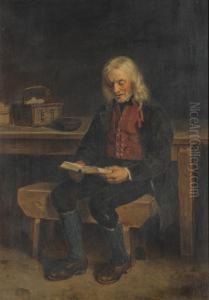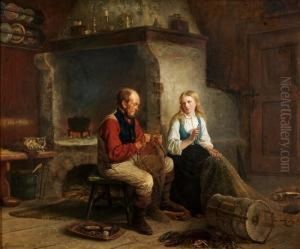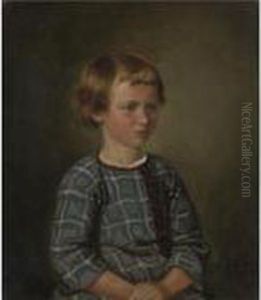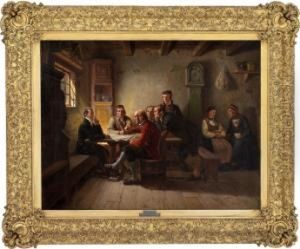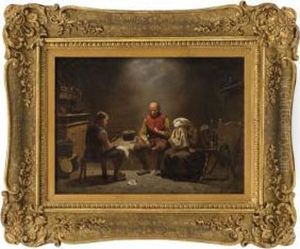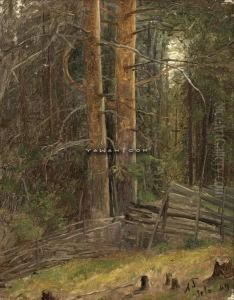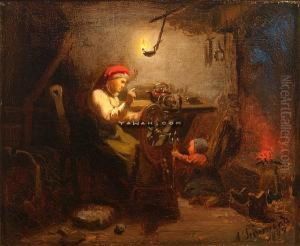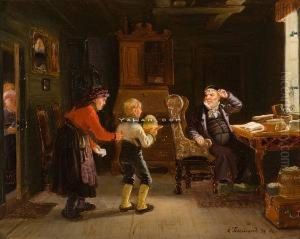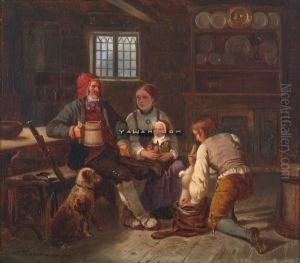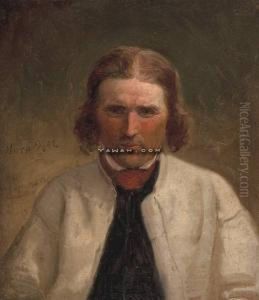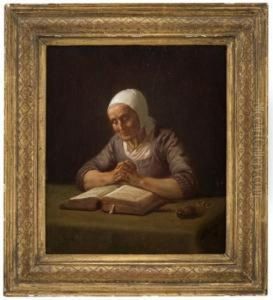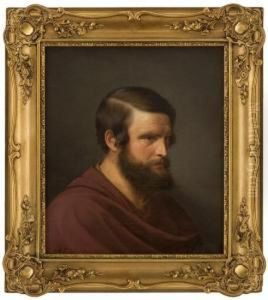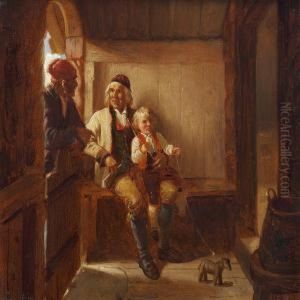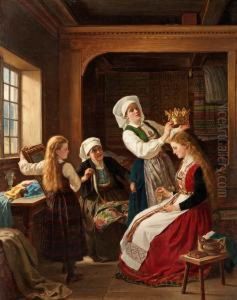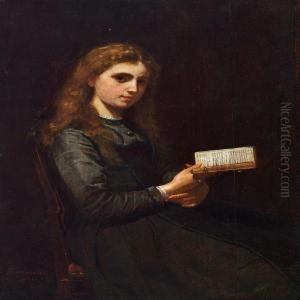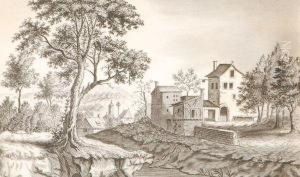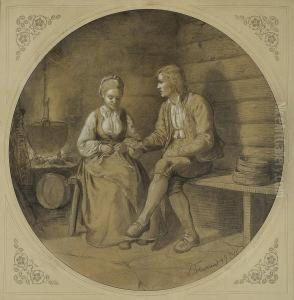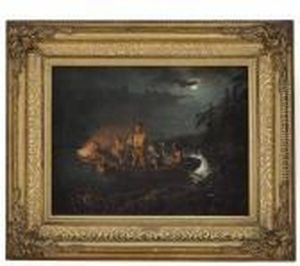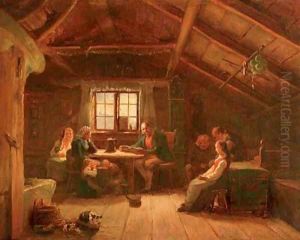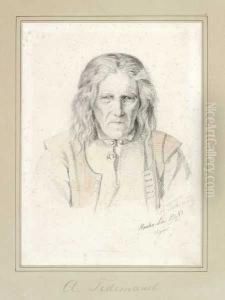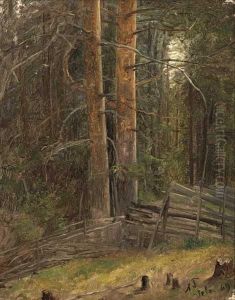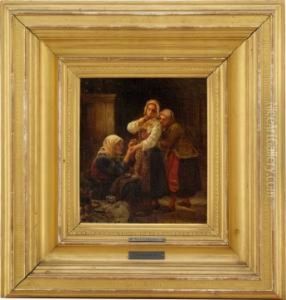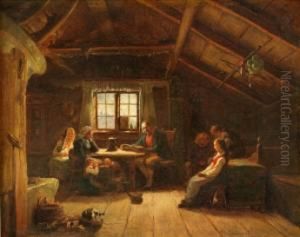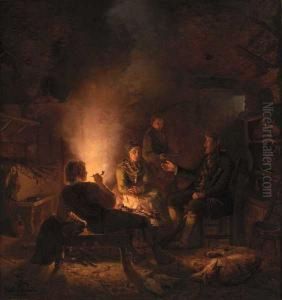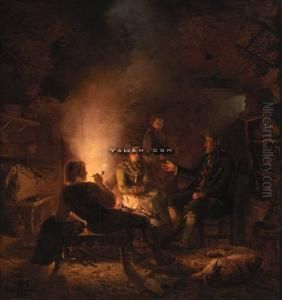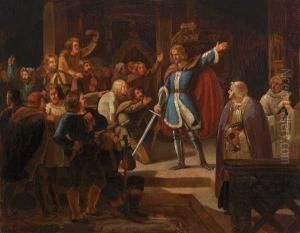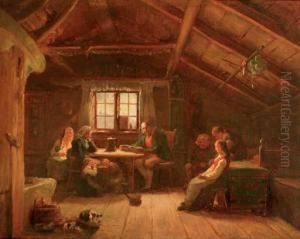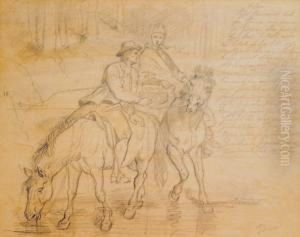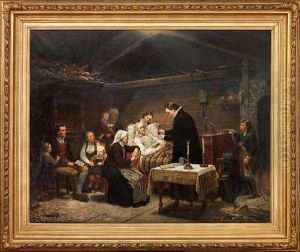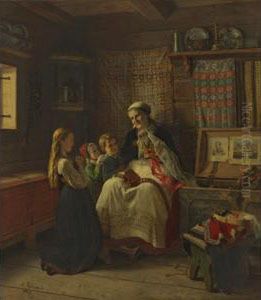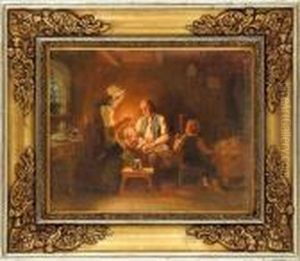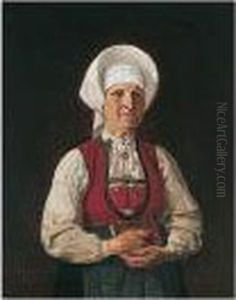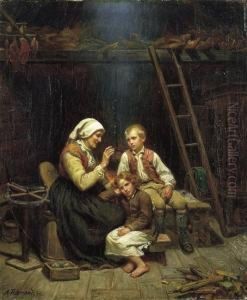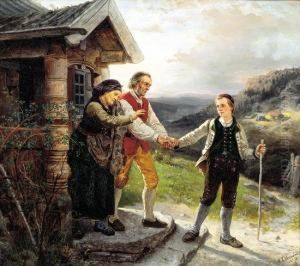Adolphe Tidemand Paintings
Adolphe Tidemand was a renowned Norwegian painter and a central figure in the national romanticism art movement in Norway. Born on August 14, 1814, in Mandal, Norway, Tidemand came from a wealthy merchant family. He showed an early inclination for art, and his family supported his artistic education. Tidemand first studied at the Royal Drawing School in Christiania (now Oslo) before continuing his studies in Copenhagen at the Royal Danish Academy of Fine Arts.
In 1837, Tidemand traveled to Düsseldorf, Germany, where he became deeply influenced by the Düsseldorf school of painting, known for its detailed and precise technique. During his time in Düsseldorf, he collaborated with the German landscape painter Hans Gude, which resulted in some of the most iconic Norwegian national romantic works, such as 'Brudeferd i Hardanger' (Bridal Procession on the Hardangerfjord), which they co-painted in 1848.
Tidemand specialized in genre painting, focusing on Norwegian rural life, traditions, and customs. His works are characterized by a meticulous attention to detail, use of strong narrative elements, and a deep sense of nationalism. He sought to capture the spirit of the Norwegian people and their way of life, which was undergoing significant change during the 19th century due to modernization and urbanization.
Throughout his career, Tidemand received numerous accolades and was a beloved figure in Norway. He played a pivotal role in developing a distinct Norwegian art scene, distinct from the broader European traditions. His paintings became symbols of Norwegian identity and are still celebrated today for their historical and cultural significance.
Adolphe Tidemand passed away on August 25, 1876, in Christiania. His legacy continues to influence Norwegian artists and he is remembered as one of the foremost painters of Norwegian national romanticism. His works are preserved in many national galleries, including the National Gallery in Oslo, and continue to be revered by both art historians and the general public.
